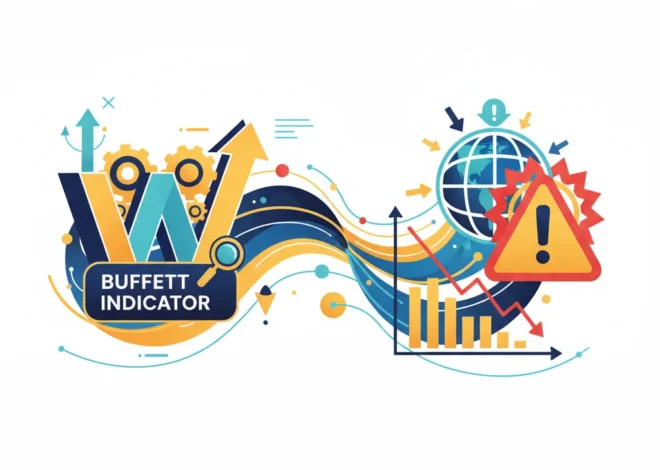
Beyond the Buy Button: Why the Future of Investing Depends on a Digital Revolution
The Illusion of Instant: What Really Happens When You Invest
In the age of slick smartphone apps, investing has never felt more accessible. With a few taps, you can buy a fraction of a share in a global tech giant or a burgeoning startup. The confirmation flashes on your screen instantly. The trade is done. Or is it?
This seamless user experience masks a labyrinthine reality. Behind that simple “buy” button lies a complex, decades-old infrastructure of clearinghouses, custodians, and settlement systems. This financial “plumbing,” known as the post-trade environment, is a world away from the instantaneous transactions we expect in our digital lives. It’s a system characterized by delays, intermediaries, and operational risks—a system that, according to industry leaders, is ripe for a revolutionary overhaul.
In a recent letter to the Financial Times, Chris Elms, CEO of Euroclear UK & International—one of the central pillars of the global financial infrastructure—made a compelling case for change. He argued that the time has come to leverage technology to make the entire investment lifecycle genuinely straightforward. This isn’t just about a faster user interface; it’s about re-architecting the very foundations of our capital markets to make them more efficient, resilient, and democratic for the modern economy.
Deconstructing a Trade: The Hidden World of Post-Trade Processing
To appreciate the scale of the proposed transformation, we must first understand the current process. When you buy a stock, the legal transfer of ownership and the corresponding cash payment don’t happen instantly. They enter a multi-day process managed by a series of powerful, often invisible, entities.
- Trading: You place your order, and it’s matched with a seller on the stock market.
- Clearing: A central counterparty (CCP) steps in between the buyer and seller. It guarantees the trade will be completed, even if one party defaults. This is a critical risk-management function.
- Settlement: This is the final step where the security is officially transferred to the buyer’s account and the cash is transferred to the seller’s. In most major markets, including the US and Europe, this process takes one or two business days (known as T+1 or T+2).
During this settlement period, your capital is tied up, and both parties are exposed to counterparty risk. The entire process involves multiple ledgers, reconciliation steps, and messaging systems, creating operational friction and adding costs that are ultimately passed down to the end investor. A 2022 report highlighted that operational inefficiencies in capital markets can cost financial institutions billions annually (source). It’s a system built for a paper-based world, retrofitted for the digital age, and it’s straining under the pressure of modern, high-volume trading.
Market Crossroads: 5 Critical Signals for Investors to Watch This Week
The Fintech Revolution: Tokenization and DLT as the Game-Changers
The call for a more straightforward investment system, as articulated by leaders like Chris Elms, is being answered by powerful innovations in financial technology. Two interconnected concepts stand at the forefront of this revolution: tokenization and Distributed Ledger Technology (DLT), the technology that underpins blockchain.
- Tokenization: This is the process of converting the rights to an asset (like a share or a bond) into a unique digital token on a blockchain. This token becomes the definitive record of ownership, easily and securely transferable.
- DLT/Blockchain: This provides a shared, immutable, and transparent ledger. All participants in a network can see and verify transactions in near real-time, eliminating the need for constant reconciliation between separate, siloed databases.
When combined, these technologies can fundamentally reshape the post-trade landscape. Imagine a world where settlement is no longer a multi-day process but an instantaneous, atomic event. “Atomic settlement” means the exchange of the security token and the payment token happens simultaneously and irrevocably in the same transaction. If one part fails, the entire transaction fails, completely eliminating counterparty risk.
This new paradigm promises a cascade of benefits, transforming the very economics of our financial markets. Below is a comparison of the traditional system versus a DLT-based model.
| Feature | Traditional Post-Trade System | DLT-Based Tokenized System |
|---|---|---|
| Settlement Time | T+1 or T+2 (1-2 business days) | Near-Instantaneous (T+0) |
| Counterparty Risk | Present during the settlement window; mitigated by CCPs | Virtually eliminated via atomic settlement |
| Transparency | Opaque; requires reconciliation across multiple ledgers | High; single, shared source of truth for permissioned parties |
| Operational Cost | High due to intermediaries and reconciliation | Significantly lower through automation and disintermediation |
| Asset Accessibility | Limited fractional ownership; illiquid assets are hard to trade | Easy fractionalization, enabling access to assets like real estate or fine art |
Beyond Efficiency: The Economic and Social Implications
The benefits of modernizing our financial plumbing extend far beyond the balance sheets of banking institutions. This is a fundamental shift with profound implications for the broader economy and individual investors.
For the national economy, a more efficient market infrastructure means:
- Increased Liquidity: Capital that was previously locked up for days in the settlement process is freed instantly, allowing it to be reinvested more quickly, fueling economic activity.
- Reduced Systemic Risk: By eliminating settlement lags and reducing dependencies on a complex chain of intermediaries, the financial system becomes more resilient to shocks. The risk of a failure at one institution cascading through the market is significantly diminished.
- Enhanced Competitiveness: A country with a cutting-edge, digital-native financial market infrastructure becomes a more attractive destination for international investment and innovation. Major financial hubs are already in a race to establish leadership in this area, with initiatives like the Monetary Authority of Singapore’s Project Guardian exploring asset tokenization on a large scale (source).
For the general public and everyday investors, the impact is even more direct. The rise of retail investing has been a defining trend of the last decade, with millions of new participants entering the market. A simplified, tokenized infrastructure can further democratize investing by:
- Lowering Costs: Automating complex back-office processes reduces the overhead for brokers, and these savings can be passed on to consumers through lower or zero-commission trading.
- Unlocking New Asset Classes: Tokenization makes it possible to create fractional ownership in previously illiquid assets like commercial real estate, private equity, or fine art, allowing smaller investors to participate in opportunities once reserved for the ultra-wealthy.
- Increasing Control: A DLT-based system can provide a clearer, more direct line of sight into asset ownership, enhancing transparency and investor confidence.
A Toast to Economic Growth: Unpacking the Investment Potential of UK Pub Licensing Reforms
The Path Forward: A Symphony of Collaboration
No single entity can orchestrate this transformation alone. As Mr. Elms’ position at the heart of the current system underscores, this must be a collaborative effort. The future of finance will be built by a coalition of diverse players:
- Incumbent Institutions: Giants like Euroclear, DTCC, and major global banks bring scale, regulatory expertise, and trust. They are not being replaced but are actively leading the charge in exploring and integrating DLT.
- Fintech Innovators: Agile startups and tech companies are the engines of innovation, building the new platforms, protocols, and user experiences that will define the future market.
- Regulators and Central Banks: Their role is crucial in creating a legal and regulatory framework that fosters innovation while ensuring market stability, investor protection, and financial integrity. They are moving from a position of observation to active participation through regulatory sandboxes and pilot programs.
This collaborative approach is essential to building a system that is not only technologically advanced but also robust, secure, and trusted by all market participants. The goal is not just to digitize the old world but to build a new one on a foundation of transparency, efficiency, and accessibility.
The ,000 Gold Prophecy: Decoding Bank of America's Bold Bet on a New Commodity Supercycle
Conclusion: Building Tomorrow’s Markets, Today
The journey from a complex, opaque post-trade system to a simple, transparent one is a marathon, not a sprint. Yet, the direction of travel is clear. The arguments put forth by industry leaders are no longer theoretical; they are being backed by significant investment and real-world pilot projects. The fusion of finance and technology is finally reaching the core infrastructure of our capital markets, promising to dismantle decades of accumulated complexity.
By embracing technologies like DLT and tokenization, we can build a financial system that is not only more efficient for institutions but also more empowering for individuals. Making investing more straightforward is more than a matter of convenience; it’s a critical step toward creating a more inclusive, resilient, and dynamic global economy for the 21st century.


